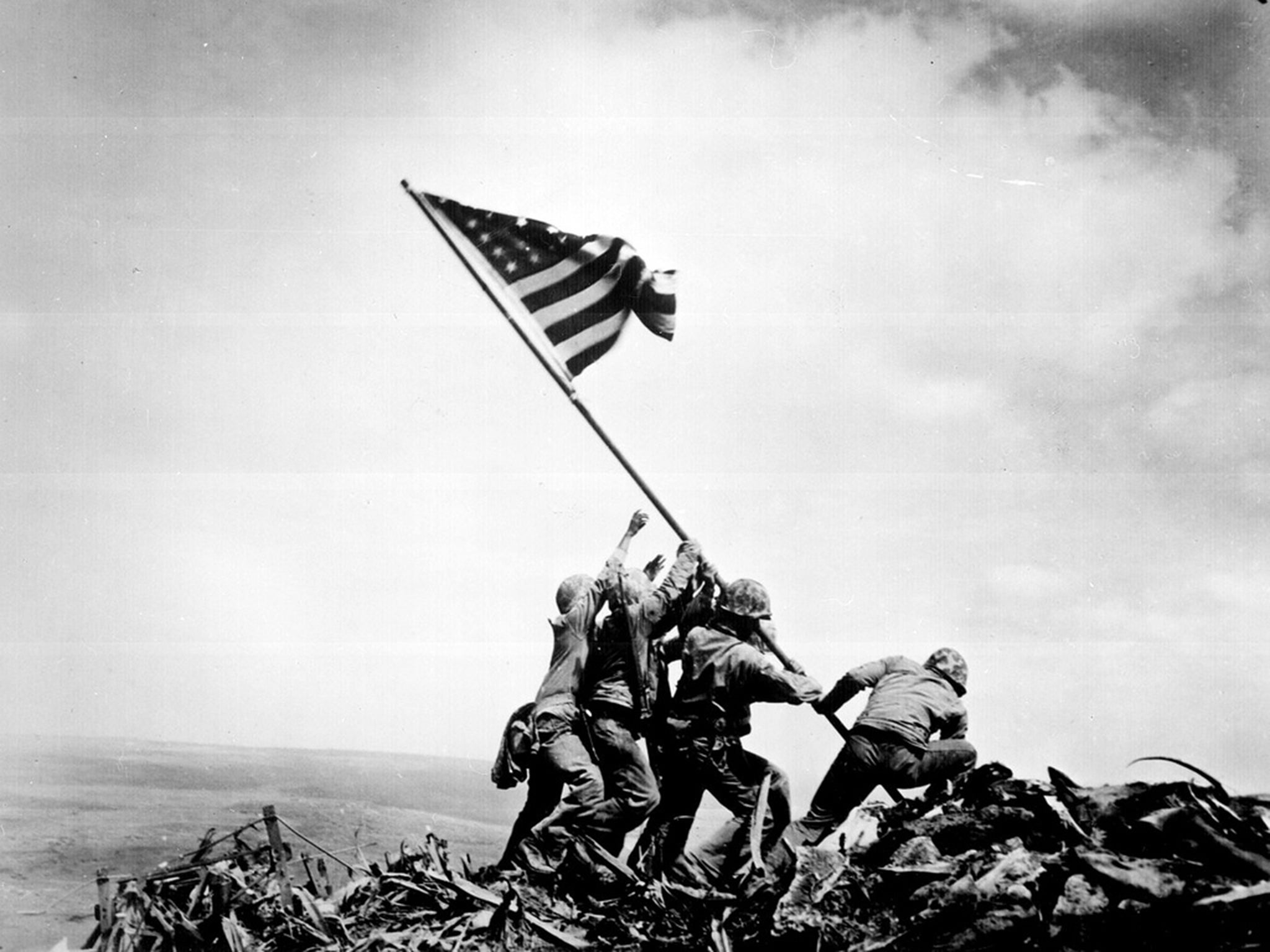Iwo Jima soldier misidentified in iconic WW2 photograph, Marine Corps says
The Marine Corps began investigating the photograph secretly in March

Your support helps us to tell the story
From reproductive rights to climate change to Big Tech, The Independent is on the ground when the story is developing. Whether it's investigating the financials of Elon Musk's pro-Trump PAC or producing our latest documentary, 'The A Word', which shines a light on the American women fighting for reproductive rights, we know how important it is to parse out the facts from the messaging.
At such a critical moment in US history, we need reporters on the ground. Your donation allows us to keep sending journalists to speak to both sides of the story.
The Independent is trusted by Americans across the entire political spectrum. And unlike many other quality news outlets, we choose not to lock Americans out of our reporting and analysis with paywalls. We believe quality journalism should be available to everyone, paid for by those who can afford it.
Your support makes all the difference.The US Marine Corps admitted that they misidentified one of the six soldiers in the iconic flag-raising photo taken during the World War II Battle of Iwo Jima in 1945.
Marine officials found that the man in the photo had, in fact, been Pvt 1st Class Harold Schulz. The man had been previously identified Navy corpsman John Bradley, but the investigation revealed that he was not present in the Pulitzer Prize-winning photo taken by Associated Press photographer Joe Rosenthal.
The identification of Mr Schulz raised questions for Marine historians - particularly, why had he never said anything about his role?
“Why doesn’t he say anything to anyone?” Marine Corps historian Charles Neimeyer asked USA Today. “That’s the mystery.”
“I think he took his secret to the grave.”
According to the New York Times, Mr Schulz - who died in 1995 at the age of 70 - had only mentioned his place in the historic photo to his family once.
“My mom was distracted and not listening and Harold said, ‘I was one of the flag raisers,’” his stepdaughter, Dezreen MacDowell, told the Times, describing a dinner she had with Mr Schulz and her mother in the early-1990s. “I said, ‘My gosh, Harold, you’re a hero.’ He said, ‘No, I was a Marine.’ ”
“After he said that, it was clear he didn’t want to talk about it,” she added. “He was a very self-effacing Midwestern person. He was already sick, and died two or three years later.”
The Marine Corps announced their investigation into the identities of the soldiers in the photograph in May, following an article published in the Omaha World Herald that featured detailed analysis by two amateur historians, Eric Krelle and Stephen Foley.
Both Mr Krelle and Mr Foley found details in various photographs - including the famous flag-waving picture - such as inconsistencies in the clothes the sixth man was wearing.
According to the analysis, for instance, the man previously believed to be John Bradley did not have a cuff in his pants. Photos of Mr Bradley taken in proximity to the flag-raising showed he wore a cuff in his pants that fell above his boots.
Mr Bradley was at the centre of the book Flags of Our Fathers, written by his son James and published in 2000. The book was adapted into the Academy Award-winning film of the same name, directed by Clint Eastwood.
After the Marine Corps made their public announcement of the investigation in May, Mr Bradley expressed his shock to the AP.
“This is unbelievable,” he said. “I’m interested in facts and truths, so that’s fine, but I don’t know what’s happening.”
He later admitted his doubts raised by the World Herald article, and told the Times his father had participated in a different flag-raising during the bloody battle. He must have believed he was in Rosenthal’s iconic image.
Marine Corps Gen Robert B Neller, who commissioned the panel to investigate the photograph, said “although the Rosenthal image is iconic and significant, to Marines it’s not about the individuals and never has been.”
“Simply stated,” he added in a statement, “our fighting spirit is captured in that frame, and it remains a symbol of the tremendous accomplishments of our corps - what they did together and what they represent remains most important.
“That doesn’t change."
Join our commenting forum
Join thought-provoking conversations, follow other Independent readers and see their replies
Comments